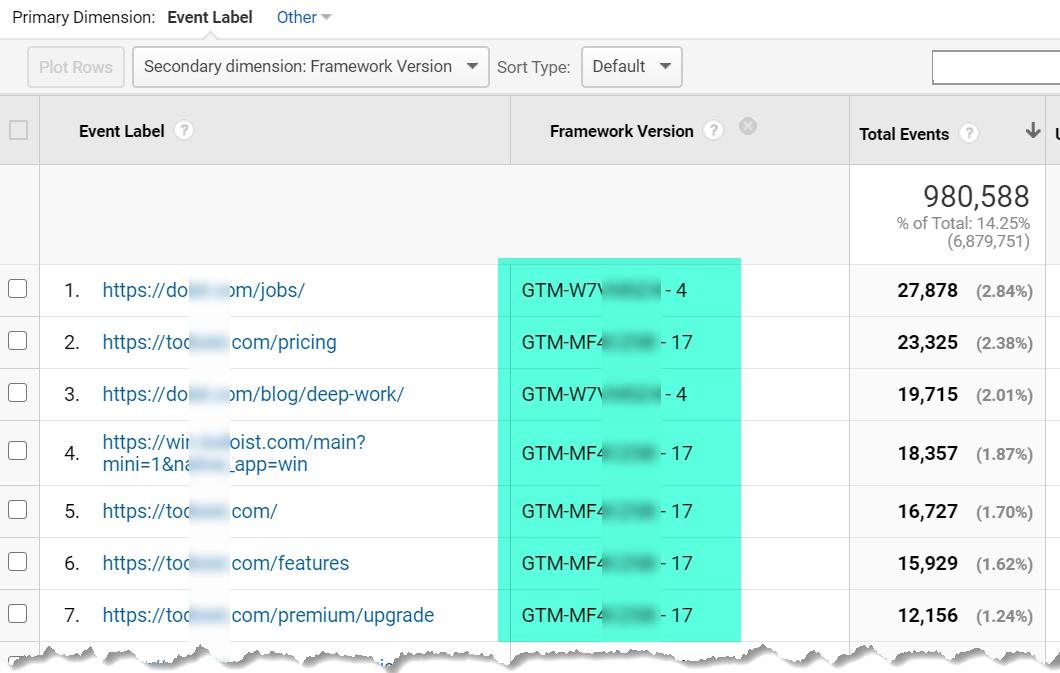Make Best Use Of Coverage Precision With Second Measurement in Google Analytics
Recognizing exactly how to maximize reporting precision with secondary measurements in Google Analytics can dramatically improve the deepness of insights acquired from data evaluation. By including second dimensions purposefully, marketers can discover hidden patterns and relationships that might not be right away noticeable when examining primary metrics alone.
Comprehending Secondary Dimensions in Google Analytics
Second measurements permit users to sector and even more dissect data past the key measurement chosen. While the primary dimension might show the complete number of page sights, adding an additional measurement such as 'source/medium' can provide insights right into where the web traffic originated from.
Moreover, recognizing secondary measurements is essential for producing more personalized records customized to specific company goals. By choosing the right mix of key and secondary measurements, analysts can reveal patterns, patterns, and connections that might or else continue to be concealed. This nuanced method to information analysis equips organizations to make enlightened decisions based on a thorough understanding of user actions throughout various dimensions.

Just How to Use Additional Dimensions
When leveraging second measurements in Google Analytics, the functional application entails choosing particular data criteria to further improve insights beyond the main dimension's range. To apply secondary dimensions effectively, start by accessing the record or dataset where you wish to dive deeper into the information. Within Google Analytics, find the main dimension that you are presently assessing. As soon as determined, click on the dropdown menu identified "Additional Measurement." This activity will expose a checklist of extra specifications that can be included in your analysis. Choose the additional dimension that aligns with your analytical objectives, such as 'Source/Medium,' 'Tool Group,' or 'Place.' By choosing an additional dimension, you can get more thorough understandings into customer actions, demographics, or procurement channels. Bear in mind that additional measurements aid offer context and granularity to your key measurement data, enabling you to remove more actionable and significant understandings from your Google Analytics reports.
Leveraging Secondary Measurements for Insights
Making use of second measurements in Google Analytics allows for an extra extensive evaluation of data, providing beneficial insights past the key dimension's range. By leveraging secondary measurements, customers can dive deeper into the performance metrics of their internet site or app, uncovering concealed patterns and trends that might not be promptly evident when just considering main dimensions.
One secret benefit of utilizing secondary dimensions is the capability to sector and filter data a lot more specifically. This can help online marketers and analysts much better understand the habits of specific user sections, such as new visitors versus returning site visitors, or website traffic originating from different geographic locations.
Furthermore, second measurements enable customers to contrast and contrast various information factors within the exact same record, providing a much more all natural sight of performance (Secondary Dimension in Google Analytics). As an example, combining the key measurement of touchdown pages with second measurements like devices or demographics can reveal which web pages are most efficient in involving individuals on various devices or from different market groups.
Basically, leveraging additional dimensions in Google Analytics empowers users to remove richer understandings from their information, resulting in even more enlightened decision-making and ultimately, boosted efficiency.
Ideal Practices for Additional Dimensions
When assessing data in Google Analytics, including second measurements properly boosts the depth of understandings acquired from the main metrics. Selecting pertinent secondary dimensions assists in giving context and a clearer understanding of the data more being taken a look at.
Furthermore, it is suggested to limit the number of secondary dimensions utilized in a solitary record to avoid overwhelming the evaluation with way too much information. Concentrating on a couple of crucial second dimensions each time can bring about more actionable and focused understandings. Additionally, take into consideration trying out with various mixes of second and primary dimensions to uncover unique fads and patterns that might not be noticeable when looking at the data in isolation.
Advanced Evaluation Strategies With Additional Measurements
Discovering complex data partnerships via the strategic application of secondary measurements can unveil nuanced understandings that elevate the depth of evaluation in Google Analytics. By combining secondary dimensions with main data collections, innovative analysis techniques can be employed to draw out useful details. One such strategy is cohort analysis, where secondary measurements enable the division of customers right into teams sharing usual attributes. This method makes it possible for a much deeper understanding of customer behavior patterns gradually, aiding in the recognition of patterns and the assessment of marketing projects' performance.
Furthermore, additional dimensions can boost the evaluation of conversion paths by supplying additional context. Comprehending the various touchpoints a customer engages with prior to transforming can be important in site link maximizing the client trip - Secondary Dimension in Google Analytics. By making use of additional dimensions to look into specifics such as traffic resources or tools made use of, online marketers can tailor approaches to target high-converting networks properly
Final Thought

To boost data analysis and gain deeper understandings right into user behavior, comprehending second dimensions in Google Analytics is critical - Secondary Dimension in Google Analytics. Additional dimensions enable users to segment and additionally study data past the main dimension selected. While the primary dimension might display the total number of page views, including a second dimension such as 'source/medium' can offer understandings right into where the web traffic stemmed from.When leveraging secondary dimensions in Google Analytics, the sensible application entails picking particular data specifications to further fine-tune insights beyond the primary measurement's range. Keep in mind that second dimensions aid supply context and granularity to your main dimension information, allowing you to discover this info here remove even more meaningful and actionable understandings from your Google Analytics reports